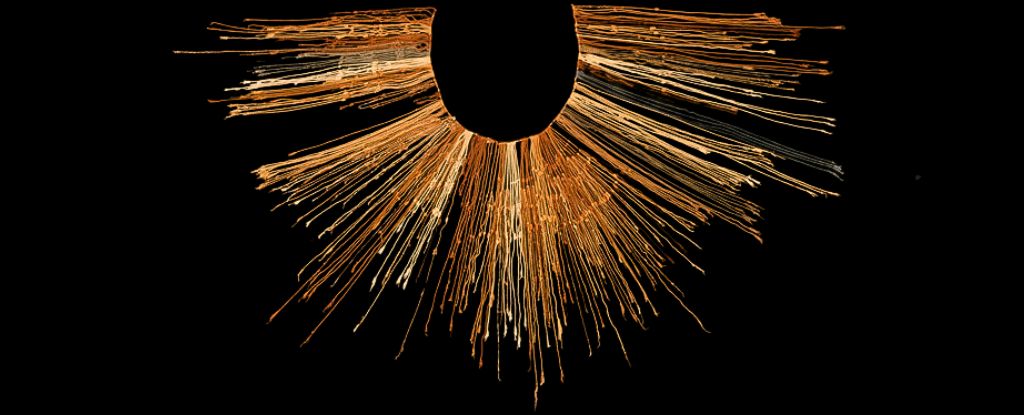The discovery that commoners in the Inca Empire also created khipus—knotted cord records used for keeping detailed records—challenges previous assumptions about the exclusivity of this skill. Traditionally, it was believed that only elite officials, known as *khipu kamayuq*, held the knowledge to produce these intricate data systems during the empire’s height from approximately 1400 to 1532. New research led by Sabine Hyland, a Professor of Social Anthropology at the University of St Andrews, indicates that khipu literacy was more widespread than previously understood.
The key to this finding lies in the practice of some khipu makers attaching locks of their own hair to the cords they created. In Inca culture, hair was considered a significant element of a person’s identity, with each strand embodying a portion of their essence. The research team observed this practice in the highland village of Jucul, Peru, where villagers maintain over 90 ancestral khipus. The presence of hair on these khipus signifies the individuals responsible for the information they contain, suggesting that many people, not just the elite, contributed to this vital record-keeping system.
Uncovering the Significance of Hair in Khipus
The evidence suggests that hair served as a “signature” for those who crafted khipus. For instance, on a 16th-century khipu from the Andean community of Collata, pieces of a leader’s insignia scarf were tied to the primary cord, highlighting the author’s authority. In contrast, when khipus contained data about multiple individuals, each person’s information was indicated using colored pendants or by including hair from different people.
A notable khipu, designated as KH0631, was identified by the researchers. Its primary cord consists entirely of human hair from a single individual, a first in khipu studies. Prior to this analysis, the presence of human hair in khipus had not been systematically examined. The hair in KH0631 measures 104 cm long and was folded and twisted when the khipu was made. Assuming an average hair growth rate of 1 cm per month, the length indicates that it represents over eight years of growth.
To gain further insights into the individual behind KH0631, the researchers conducted isotopic analysis of the hair. This analysis allows researchers to infer dietary habits from the stable carbon, nitrogen, and sulfur isotopes present. The findings were surprising: the individual who created KH0631 had a diet typical of a low-status commoner, predominantly consisting of tubers and greens, with minimal meat or maize.
Implications for Understanding Inca Society
The isotopic data show little marine contribution to the diet, indicating that this person likely resided in the highlands rather than along the coast. In the ancient Andes, dietary distinctions were stark between high-status elites, who enjoyed meat and maize-based dishes, and commoners, who primarily consumed potatoes and legumes.
This research suggests that KH0631’s creator was a commoner, contradicting previous assertions that only high-ranking officials were responsible for khipus. The geographic origin of KH0631 remains undetermined; however, isotopic analysis indicates the creator lived at an elevation between 2,600 and 2,800 meters above sea level in southern Peru or northern Chile.
The analysis of KH0631 marks a significant advancement in understanding the social dynamics of the Inca Empire. By revealing that khipu creation extended beyond the elite, this research opens new avenues for exploring the complexities of Incan society and culture.
Hyland’s team has paved the way for further studies into the role of commoners in the Inca Empire, suggesting that khipu literacy and the ability to record information may have been more democratized than previously believed. This shift in perspective not only enriches our understanding of the Inca civilization but also highlights the importance of incorporating diverse voices in historical narratives.
This article is republished from The Conversation under a Creative Commons license. Read the original article for more insights into this fascinating discovery.





























































